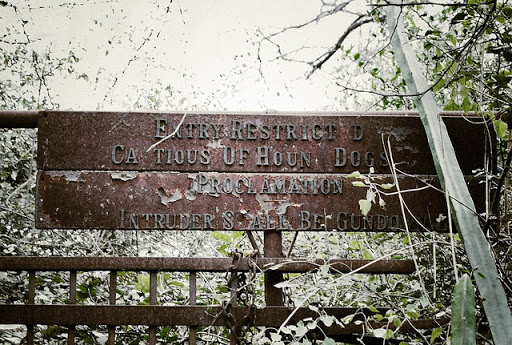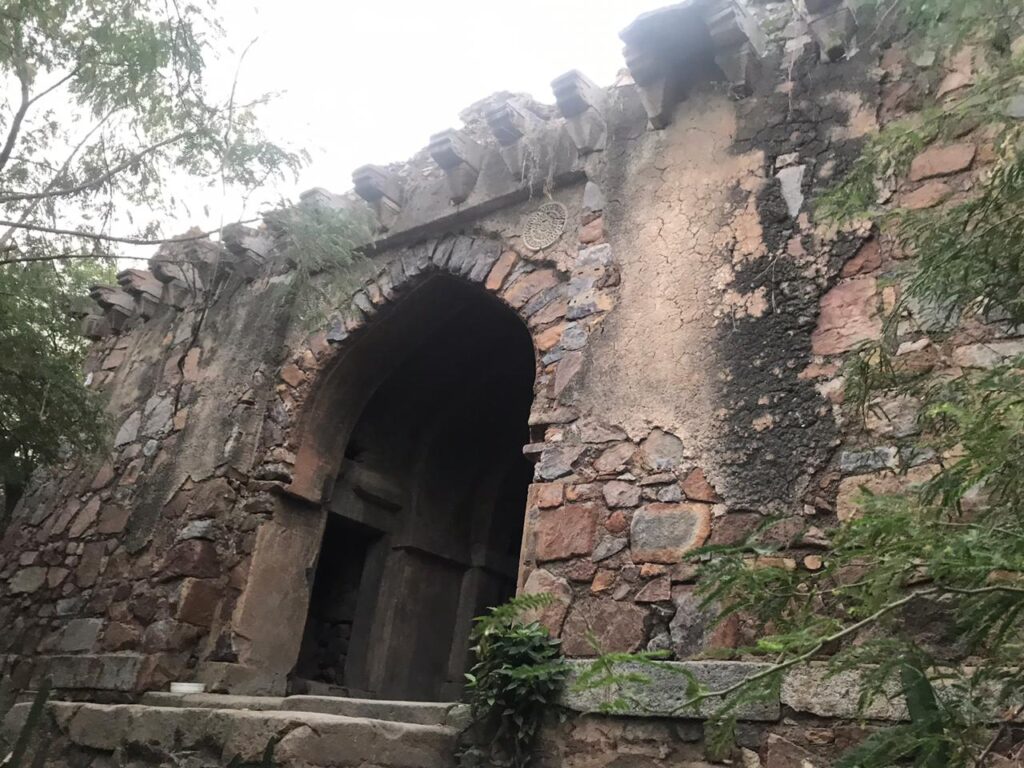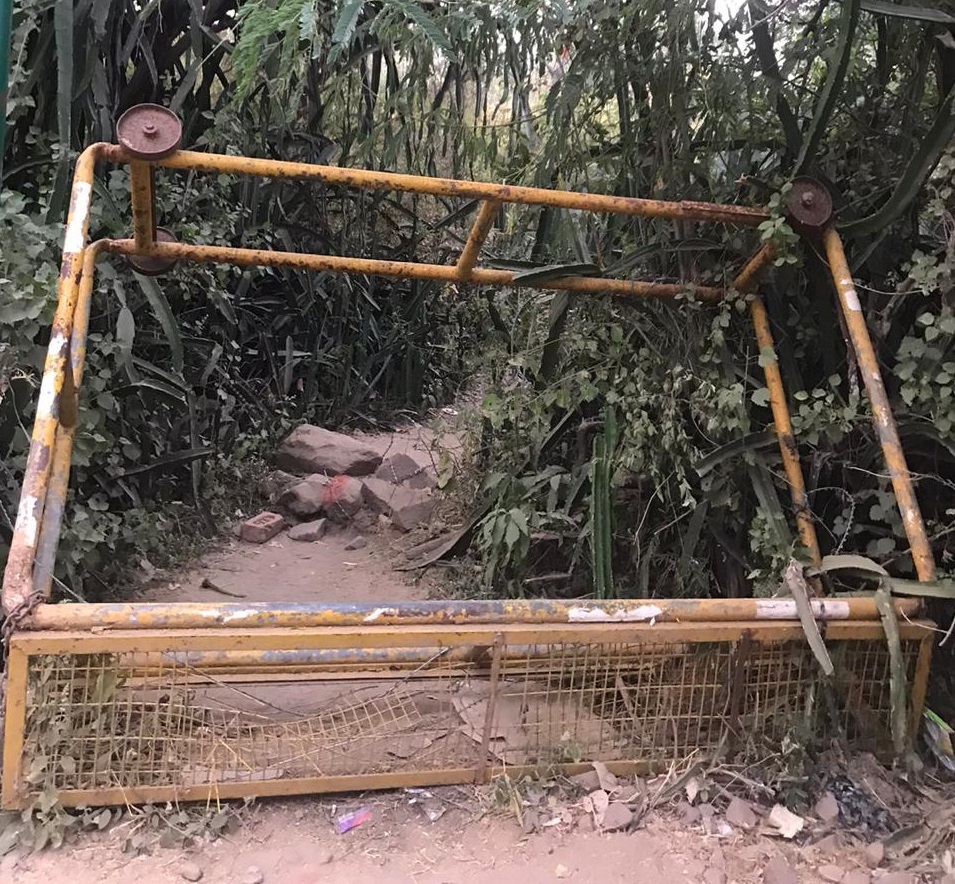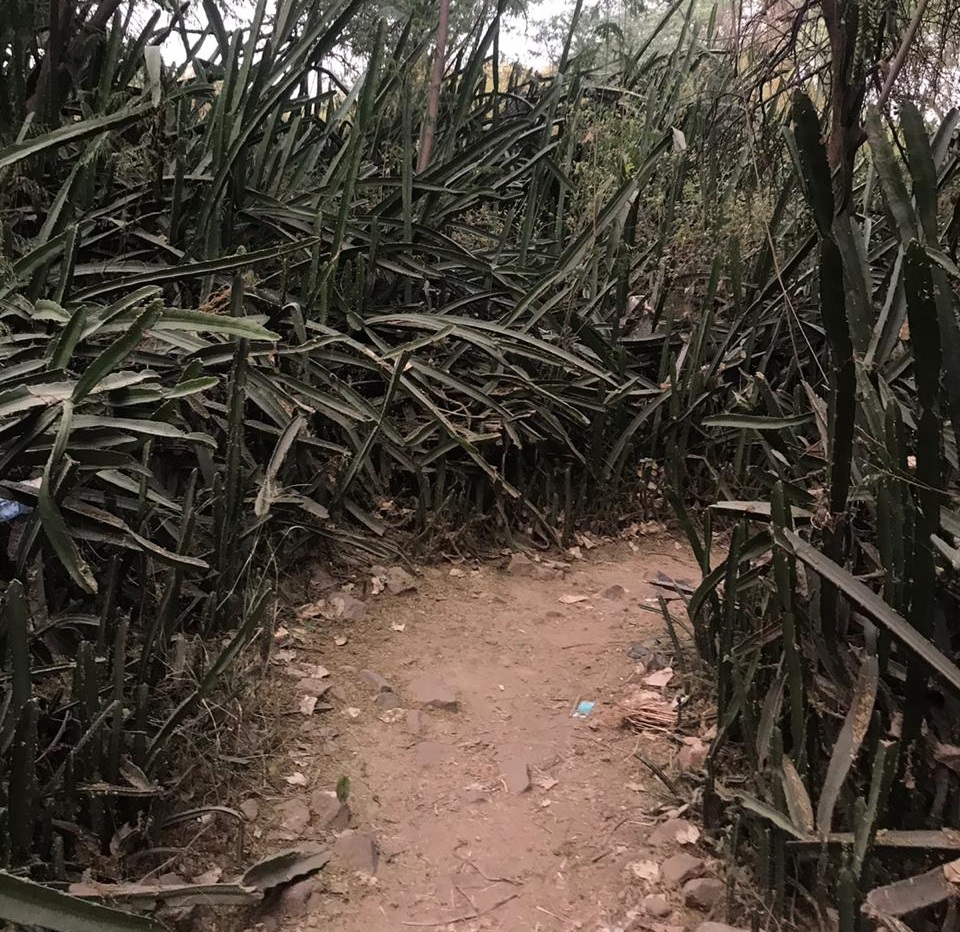When you Google for “Haunted Places in Delhi”, one of the first results that Google will throw up is that of ‘Malcha Mahal’. Hidden between dense vegetation and thorny shrubs which cover the (quite massive) building in its entirety, the ‘Mahal’ is not really a palace as the name suggests, but a small Tughlaq-era construction which once served as a hunting lodge. It is not ghosts, but ghosts of the past that haunt Malcha Mahal. The royal ghosts of a bygone era, the ghosts of misery, the ghost of wasted potential – and a ghost of stories that will remain untold forever.

Malcha Mahal was known primarily because of the residents who lived there. A woman who identified herself as ‘Begum Wilayat Mahal’, claimed to be a direct descendent of the last Nawab of Oudh, Wajid Ali Shah. A patron of arts, culture, and a lover of good food – Wajid Ali Shah is among the biggest reasons why we associate Lucknow with the ‘Nawabi Culture’ today. Surely, his descendants can’t live like paupers! In the 1970s and 80s, the Begum wrote letters to everyone ranging from the local authorities to Indira Gandhi and even Queen Elizabeth II about how she was being mistreated and she deserved a royal accommodation. Her royal lineage was finally accepted by Gandhi and Mahal, along with her two children were given permission to live in Malcha Mahal.

Photos from the 80s and the 90s show the building in all its splendor. The stone-gray walls look like pretty much any other Delhi monument – peeling plaster on Delhi Quartz. However, the floors were carpeted with Persian rugs, oil lamps that lit the dilapidated structure, a collection of books, there were portraits of their family and the Nawabs of Lucknow, and the finest of plates lay on rotting wooden tables. A signboard outside the Malcha Mahal greets visitors with a rather unpleasant sign “INTRUDERS SHALL BE GUNDOWN”. Chances were that before you could be gunned down, you would be chased off by one of the 27 dogs that the family owned. A set of people who lived away from the cruel world which had stripped them of all their royal titles and funds, the Royals of Oudh lived there without electricity or water connection for four decades.

Depressed after a long-fought fight for her rights, Begum Wilayat Mahal consumed a concoction of diamond and pearls and took her own life. Once a crowd puller in the stations of Lucknow and Delhi where she demanded recognition, the Begum withdrew herself into complete recluse till the day diamonds flowed through her veins. Her two surviving children (a third died “of sadness” during the days of their protest at a railway station) Ali “Cyrus” Raza, and Sakina Mahal interred her body in the same complex. However, it was later exhumed and cremated so that grave robbers, who believe in urban legends of royals being buried with gold and silver, don’t damage their mother’s body. The last of the surviving children, Ali Raza passed away in November 2017, following which the monument quickly gained the reputation for being “haunted”.
The road leading up to Malcha Mahal comes to a dead-end at the ISRO earth station. In 2020, a Delhi Police barricade and a few meters of barbed wire stand in the way of people wanting to visit Malcha Mahal. The barricade is more like a small gate and the wire too disorganized to stop even stray animals. What truly haunts Malcha Mahal today are the vloggers, bloggers, urban ghostbusters, and thrillseekers from all over Delhi, who drop by every few days (and occasionally at night). Empty alcohol bottles, wrappers of packaged chips, and animal droppings are all that remain in this royal abode.

Gone are the Persian rugs and the oil lamps and the plates (which were neatly laid out on the table the day Cyrus died). As of October 2020, some portions of the peeling walls have also been plastered and restored. The floors have been swept clean – and the only remains of the royals that now exist are some pots (without their plants), a broken bed, and a broken dining table. Even the shutters and the window grills have been taken down and kept aside. Strangely enough, vermillion has been stained on some walls, as if to ward off some evil spirit. Another strange set of markings show tally marks counting …something. One of the entrances to the central chamber reads KASHMIR GH ST with the O being replaced by the pointy end of the arch. .

After about 30 years of having been forgotten by practically everyone except the occasional historian or journalists, Malcha Mahal sprang back into the international limelight in 2019 when Ellen Barry published ‘The Jungle Prince of Delhi‘ for the New York Times. The article gained major fame and ended up as a Pulitzer Prize 2020 finalist (even landing up a TV show on Amazon Prime later in the year). Besides telling a great story of a lonely reclusive prince seeking a friend in a journalist, the article raises some important questions – who were these people? were they really who they claimed to be? was it a lie that had gone too far? the only three people who could tell the truth are gone forever. Multiple people associated with the erstwhile Royals of Lucknow have called them impostors. A verified descendent of the royal family, Prince Anjum Quder called it a “cheap publicity stunt“, while pointing out she cannot have the title of ‘Mahal’ because that can only be awarded by the King to his Queen when she bares him a male child and the title cannot pass from a mother to a daughter.

Nothing perhaps sums up the fate of the House of Oudh better than these lines from Meer Taaqi Meer:
दिल्ली जो एक शहर था आलम में इंतख़ाब
रहते थे मुन्तख़िब ही जहाँ रोज़गार के
जिस फ़लक ने लूट के वीरान कर दिया
हम रहने वाले हैं उसी उजड़े दयार के
Delhi, that was a city unique on the globe
Where lived only the chosen of the time
Destiny has looted it and made it deserted
I belong to that very wrecked city
A princess who ate diamonds, a lonely prince raised on a lie seeking solace in the company of a journalist, a house surrounded by dense vegetation in the middle of a metropolis would otherwise seem like something straight out of a Salman Rushdie novel. However, an unmarked grave somewhere in Delhi is indeed proof that the Jungle Prince of Delhi was once a living breathing man who took his story to his grave.

PS: While there’s nothing “haunted” about Malcha Mahal in the supernatural sense, here’s a collection of horror stories from Delhi-NCR that you must read!
PPS: You might also want to look at some of the most iconic graves of Delhi!